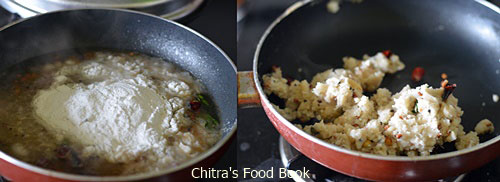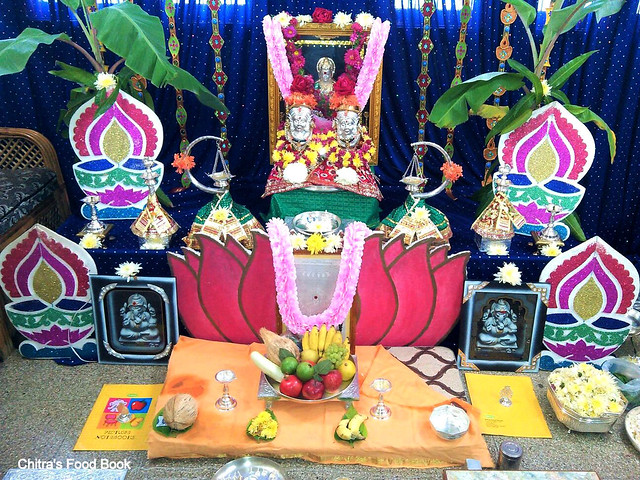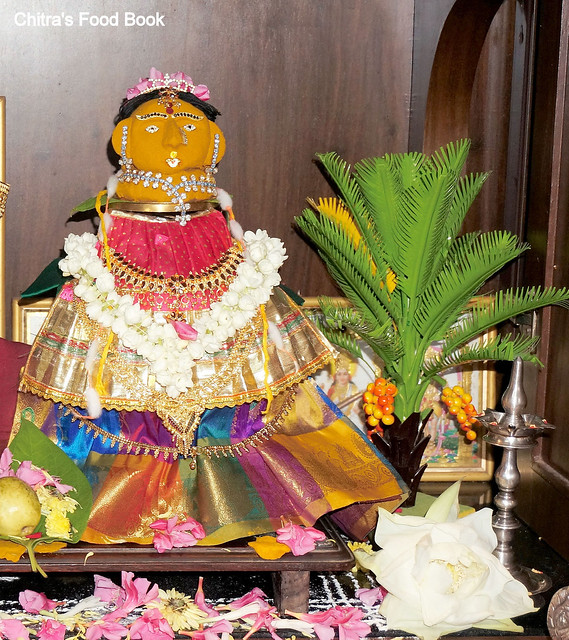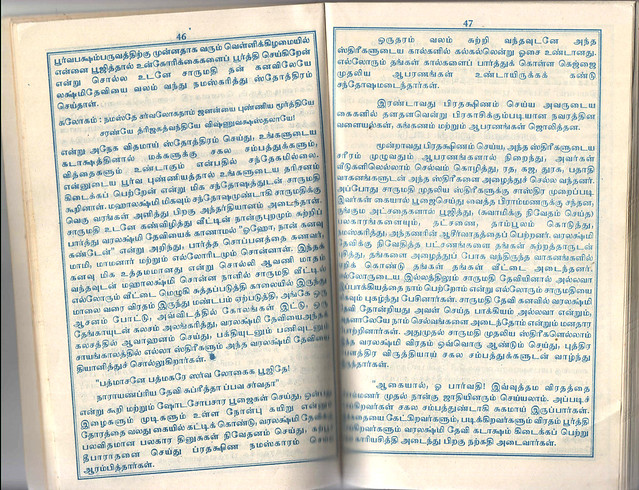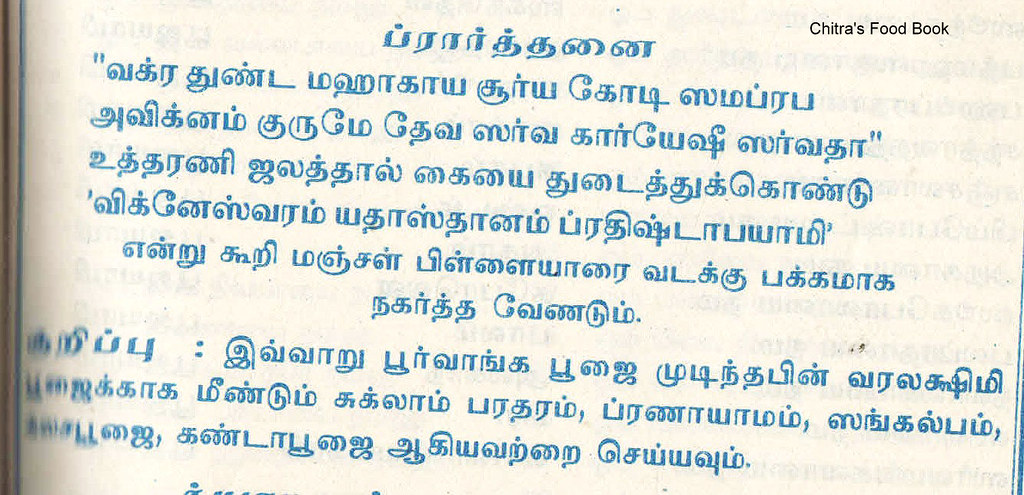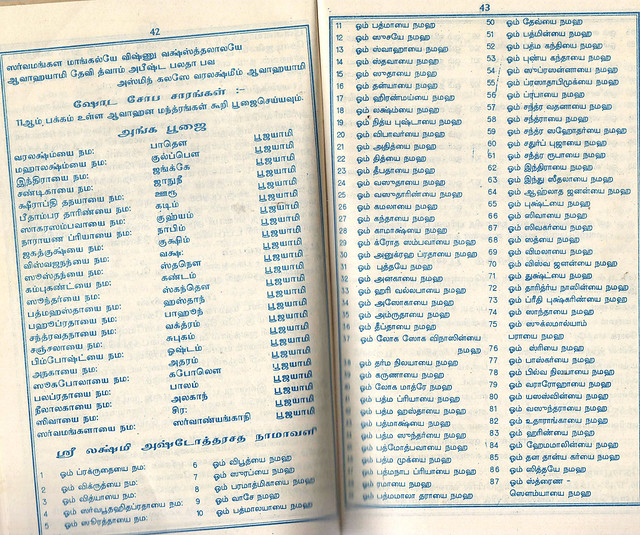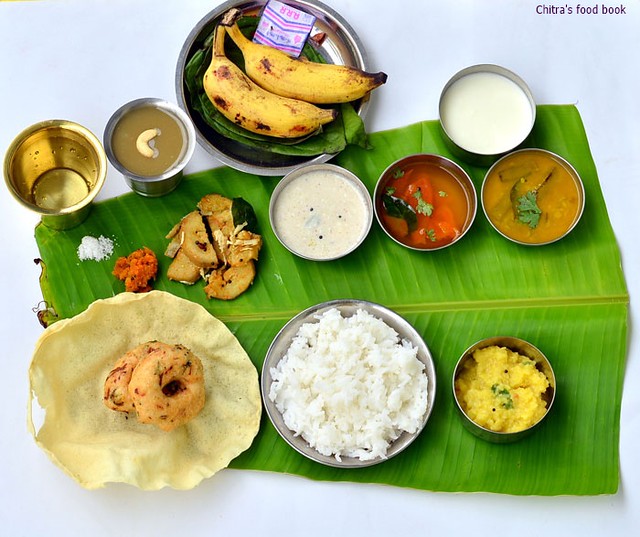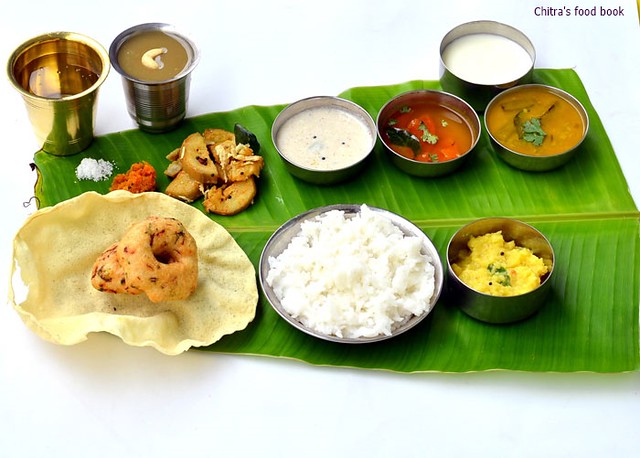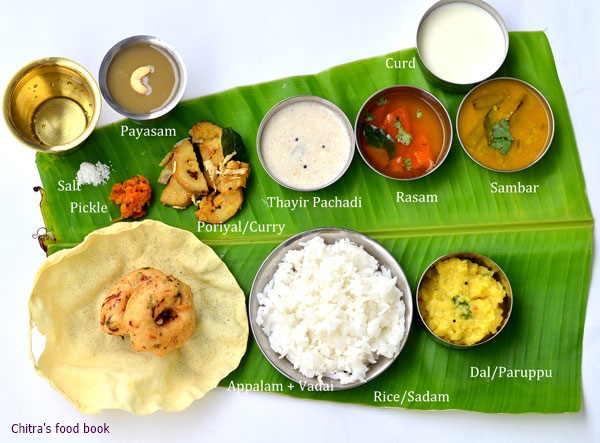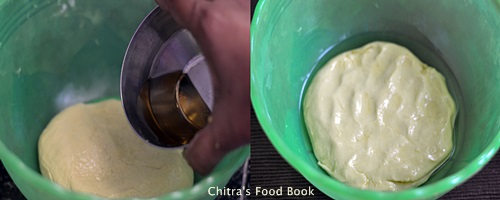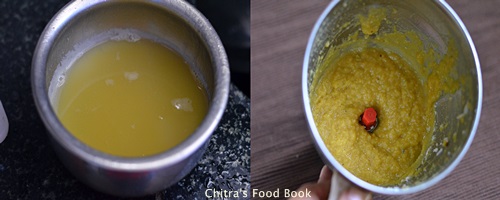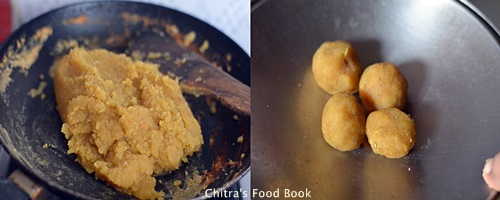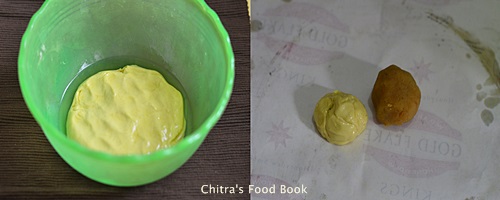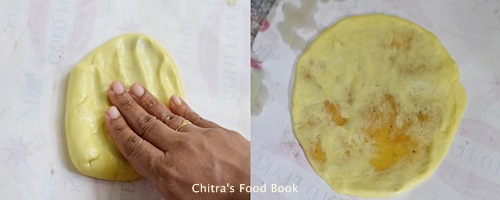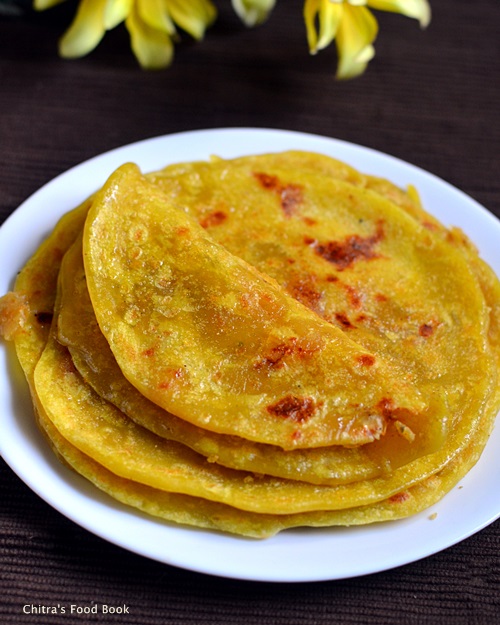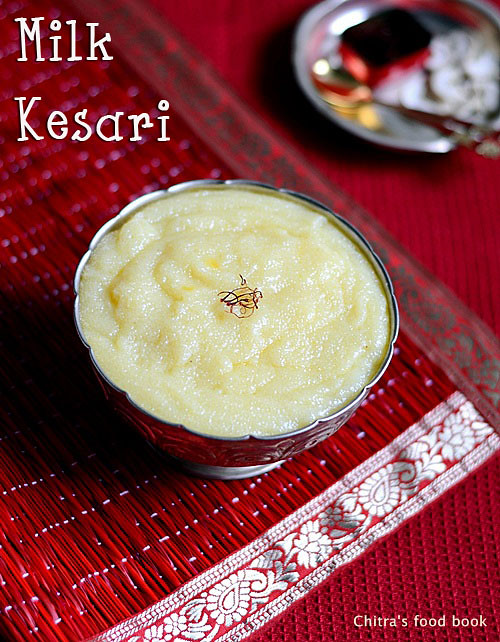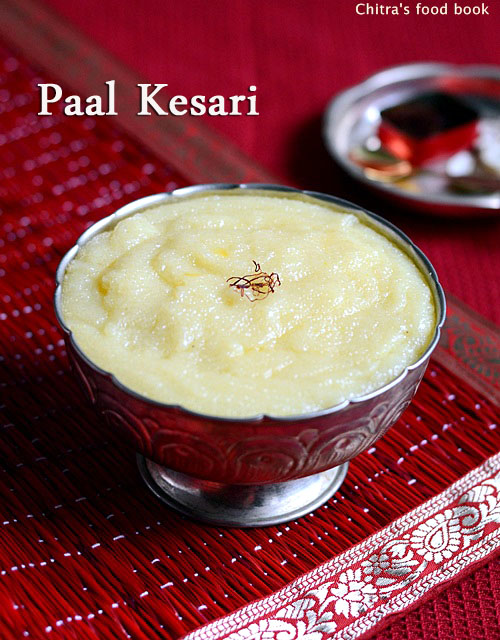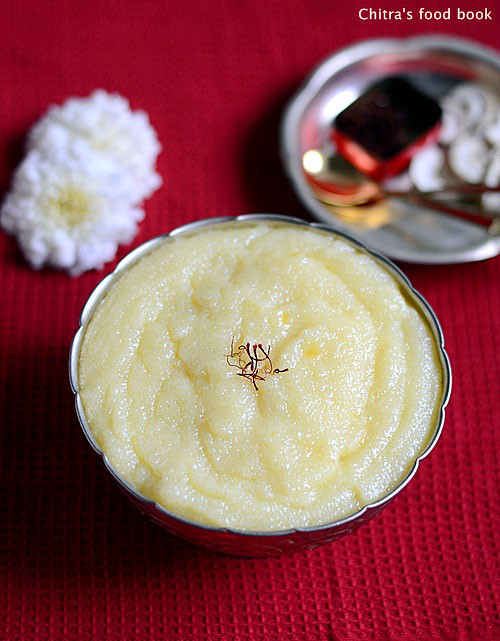So I thought of asking my friends who perform Varalakshmi Vrata every year in a grand manner. For making this post, I took the help from two of my friends Shalini and Archana. When I told them about this post, they became very happy and shared their pooja procedures along with their Varalakshmi decoration pictures.
Shalini gave me a book titled “Aadi, Avani maadha Pooja Vidhanam” in which all the important festivals like Ganesh Chaturthi, Varalakshmi Vratham, Naga Chathurthi and Garuda Panchami were discussed in detail with slokhas in Tamil. Not just that, Shalini spent nearly 3-4 hours over phone , explained each and everything about the pooja while I was drafting the post. Without the help of Shalini, this post would not have come up in my blog. I must really thank God for giving me such a helpful friend in all aspects of my life.
If you are a beginner and looking for Varalakshmi pooja slokas in Tamil, right click on the images and click "Save as", download and save them in your mobile or PC and chant these slokas while doing the pooja. I have also shared some audio, video links for people who look for Varalakshmi vratham pooja vidhanam and idol decoration in Telugu and Tamil .
Please scroll through the end of this post to check the links. Lets see the Neivedyam recipes list, pooja items requirements list, Things needed for varalakshmi pooja, Pooja procedures, Varalakshmi vratham story and slokhas for Varalakshmi Vrata in step by step.
Please visit my in-laws kolam blog
"Learn Kolam" for Rangoli ideas. Lets see how to do Varamahalakshmi Pooja at home :)
Pic courtesy – My friend Shalini made God's face with turmeric powder.
Varalakshmi Pooja Prasadam Recipes
Let me start with the list of Neivedyam Recipes. You can make any 5, 7 or 9 dishes for count.
Check out
my list of Varalakshmi vratham recipes of Tamil nadu, Andhra and Karnataka.
Items required for Varalakshmi Pooja
- Rice flour & colors – for drawing rangoli ( Please visit my in-laws kolam blog "Learn Kolam" for Rangoli ideas.)
- Thambaalam/A big plate OR A wooden plank/Peeta
- Few Banana leaves
- Raw Rice – as needed ( to spread over the peeta)
- One Kudam/Kalasha ( silver, bronze or copper)
- Water scented with Jathikai/Mace, Cardamom, Saffron threads/edible camphor, Cloves(to fill the kalasha)
- few Mango leaves ( to keep on top of kalasha)
- One coconut for kalasha and few more for thamboolam bags
- Turmeric powder ( for making gowri,if you have the practice)
- Kumkum
- Chandan( Sandal paste)
- Akshatha ( Raw rice coated with turmeric/Manjal podi)
- One lotus flower
- Face of goddess ( Available ready made in Market)
- Jewelries ( For Eyes, Nose – Available in market)
- Dress and blouse piece for Lakshmi ( Buy in market)
- Flowers and garland ( for archanai & decoration)
- Betel leaves, Betel nut, Banana ( Vetrilai, Paaku, Vazhai Pazham)
- Thoram for hands/pongu nool for neck (Thoram is nothing but a sacred thread coated with turmeric powder with 9 strings and 9 knots whereas Pongu nool is a single thread smeared with turmeric powder)
- Milk, Dry fruits & nuts ( optional)
- Fruits ( all seasonal fruits)
- Panchamirtham ( a mixture of fruits, jaggery, dry fruits, nuts and ghee)(optional)
- Neivedyam recipes ( Idli, Sweet pooran kozhukattai ( poornam borelu), ellu kozhukattai, Karjikai/fried sweet samosa, Chitranna, Payasam, sweet appam ( based on your tradition).
- Thamboolam set of kumkum,chandan,bangles, Betel leaves and nuts, Yellow rope, blouse pieces, coconut, banana along with 1 rupee coins) – Make them ready as per the number of ladies you invite.
- Ready made(plastic) cups and bowls for distributing prasadam.
- Mahalakshmi stothram book or download the images I have shared here.
About the Pooja Vidhanam book
The slokas I have shared here is from a book titled "Aadi avani maadha Pooja vidhanam". This book was given as a compliment for my friend's mom in Pudukottai and it was published in the year 2000. I don't think whether this book is available in the market. But I am sure you can get the book for Varalakshmi vratham with story, Mahalakshmi Ashtothram in Giri trading agency.
I have shared the title pages of book as per a reader's suggestion.
Please leave a comment in the feedback section if you get any books of this kind. It would be useful for all the people landing in this page. Thanks ! Please click on the image to see the bigger sized picture.
Pre preparatory works for Varalakshmi Pooja
On Thursday morning,wash all the pooja vessels and kalasha pot.Wash the lamps, keep kumkum dots and put threads. Oil the lamp and keep it ready for the next day use. Make the thoran and pongu nool and arrange the other pooja things in a plate.
Light the lamp, perform pooja by keeping some neivdeyam like sundal, sweet appam etc. Read the Varalakshmi Vratham story. I have attached the story picture in Tamil. Please refer it. Some people read the stories on Friday after completing the pooja.So its your choice.
You can also keep the manai/Wooden plank/Peeta and place a banana leaf over it. Spread the raw rice and keep it ready for next day’s pooja. Remember you should not keep the kalasha now. It should be kept only on Friday. Please click on the image to see the bigger sized picture.
Varalakshmi Pooja Story in English
The story happens in a beautiful town called Kundinagaram located in the Kingdom of Vidarbha /Vidharba Rajyam. In that Kundinagram town, Goddess Adilakshmi, being pleased by her devotion tells Charumathi in a dream and directed her to perform the vrata to enable her to fulfil her desires. Charumathi wakes up and tells her husband about the dream.
Charumathi along with some neighbourhood women takes bath in the early morning hours and prepare a mandapam and invites Varalakshmi Devi. She recites the following sloka along with other women with utmost faith and devotion.
Lakshmi Ksheerasamudra rajatanyam sri rangadhameswareem
Dasibootha samastha devavanitham lokaika deepamkuram
Sri manmanda kataksha labdhivibhat brahmendra gangadharam
Twamtrayamlokyakutumbhineem sasijavandemukunda priyam
Then she wore nine threads / Thoranam to right hand and offers naivadyam to Goddess Lakshmi Devi. On the completion of the first circumstance, she heard she found Gajjelu, Andelu and other ornaments. On the second circumstance, they found kankanams made of navaratnams to their hands. On completion of the third circumstance, they found immense wealth.
Then Charumathi offers Tambulam to the brahmin priests and distribute the vrata prasadam to the relatives and lead a happy life. Since then, Hindu women perform this vrata with utmost faith and trust till today. With this, Lord Eswara concludes telling the story to Goddess Parvathi.
Source:http://devotionalonly.com/varalakshmi-vratam-pooja-procedure-and-story/
How to make thoram and Pongu nool
Thoram and Pongu nool are nothing but the sacred thread smeared with turmeric powder. Thoram is made by taking 9 strings of thread. Put 9 knots in equal intervals. The number of thoram depends on the number of ladies & young girls at home. Thoram has to be tied around your wrist and Pongu nool is nothing but a single thread smeared with turmeric powder.
You should tie it around your neck.Married ladies wear both Pongu nool and thoram whereas young girls tie thoram alone. Keep the thoram, Pongu nool, 9 betel leaves, 9 betel nuts, 9 banana, 9 dates, 9 turmeric sticks, kumkum box, Karimani mala ( black beads chain) in a plate and keep it ready for pooja. You can do all these works on Thursday night itself.
How to make the kalasha/Kalasam for Varalakshmi Pooja
For making Kalasam / Kalash, Fill the silver or bronze pot(kudum) with scented water (add cardamom, nutmeg, edible camphor etc) till its brim. Some people add kumkum, turmeric powder, dry fruits in the water. Some people have the practice of keeping raw rice, 1 lemon, 9 betel leaves(vetrilai), 9 betel nuts, 9 turmeric sticks( manjal kizhangu), 9 dry grapes, 1 moulded jaggery (Achu vellam), dry fruits & a karimani mala (black bead chain), coins inside the kalasha instead of scented water.
So please make the kalasha according to your tradition. On the top of kalasha, place 5 mango leaves( keep in odd numbers) and keep a coconut smeared with turmeric. The tail portion of coconut should face upward. Kalasam should face east. After making the kalasha, keep a kumkum dot and keep aside till you make other arrangements.
How To Make Kalasam For Varalakshmi Pooja
The next day i.e Friday, after taking bath, wear a silk saree and some gold ornaments ( old or new). Wash the place where the pooja is going to be held. One should observe fasting till the Pooja is finished( Elderly woman can have milk and fruits). Draw rangoli using rice flour and place the peeta/Wooden plank/Manai OR Big plate/Thambaalam.
Spread a banana leaf and put some raw rice ( If you have done this on Thursday night, skip this step and proceed to the next step).
Place the kalasha over the rice. Cover the coconut using a new blouse piece( made into cone shape by referring the video link given below).
To this coconut, an image of Goddess Lakshmi is fixed or the image of Lakshmi made using turmeric powder. My friend makes the face of Lakshmi using turmeric powder as shown in the second picture. In some areas, women place a mirror behind the kalasham. Today, there are specially made Varalakshmi pots and faces available in the market. So you can buy and fix it with the blouse piece.Now the kalasham symbolically represents Goddess Lakshmi.
Decorate the idol with dress and Jewelries and garlands. You can dress it with a tucked saree or skirt (Pavadai). Put some jewels (Preferably gold) and tie a pongu nool around the neck. It is considered to be the Mangal sutra(Thali) Keep chandan & KumKum dots. Now Goddess Lakshmi idol is ready to perform pooja. Make a cone shaped Ganesh/Pillayar using turmeric powder mixed with water and keep it near the kalasha. Light the lamps at the time of pooja and start doing it.
Please refer
this video for decorating Goddess Lakshmi Idol.
How to Perform Varalakshmi Pooja
Lets see how to do Varalakshmi Pooja with all slokhas below.
Ganesh pooja
Any auspicious festival should be started with Lord Ganesh pooja. So make a small cone shaped Ganesha using turmeric powder ( Manjal pillayar). Place it near the kalasha. Read the sthothram given below and worship Lord Ganesha to do this pooja without any obstacle and after chanting the sthothram, move the Ganesh towards North direction.
शुक्लाम्बरधरं विष्णुं शशिवर्णं चतुर्भुजम् ।
प्रसन्नवदनं ध्यायेत् सर्वविघ्नोपशान्तये ॥
Shukla-Ambara-Dharam Vissnnum Shashi-Varnnam Chatur-Bhujam |
Prasanna-Vadanam Dhyaayet Sarva-Vighno[a-U]pashaantaye ||
Meaning:
1: (We Meditate on Sri Vishnu) Who is Wearing White Clothes, Who is All-Pervading, Who is Bright in Appearance like the Moon and Who is Having Four Hands,
2: Who is Having a Compassionate and Gracious Face, Let us Meditate on Him To Ward of all Obstacles.
Source : (
http://www.greenmesg.org/mantras_slokas/sri_vishnu-shuklambaradharam_vishnum.php)
Avahanam and Anga Pooja
After finishing Ganesha pooja, take some flowers and akshatha in hand and chant the Avahanam slokha. Visualise Goddess Lakshmi in mind and offer the flowers and akshatha to kalasha. Goddess Lakshmi is invited to our house.
Lakshmi Ksheera Samudra Raaja Tanaya
Sree Ranga Dhaameshvari
Daasi Bhootha Samasata Deva Vanithaam
Lokaika Deepankuraam
Sreeman Manda Kataaksha Labdha Vibhava
Brahmendra Gangaadharam
Tvaam Trailokya Kudumbineem
Sarasijam Vande Mukunda Priyaam
Meaning: Goddess Lakshmi, who is the daughter of the king of the ocean of milk, whose abode is Srirangam (with Lord Ranganatha), who is served by all the divine ladies in heaven, who is the guiding light for the world, who has obtained the sustained (continued, everlasting) glance (Grace) from Brahma, Indra and Shiva, whose abode is the three worlds (
Bhu, Bhuva, Suvaha) - I offer my prostrations to Thee, the beloved of Lord Krishna (Mukunda).
Now perform Anga Pooja (Worshipping each body parts of Lakshmi). Offer flowers to Kalasha by chanting Anga pooja sthothram. Refer the picture below for Anga pooja Sthothram in Tamil. Please refer
this link in Hindupad for sthothra in English.
Following this, chant Lakshmi Ashtothram(108) by offering flowers to Kalasha.
Refer the below picture for Anga Pooja slokha & Lakshmi ashtothram
( Click on the image to see the bigger sized picture).
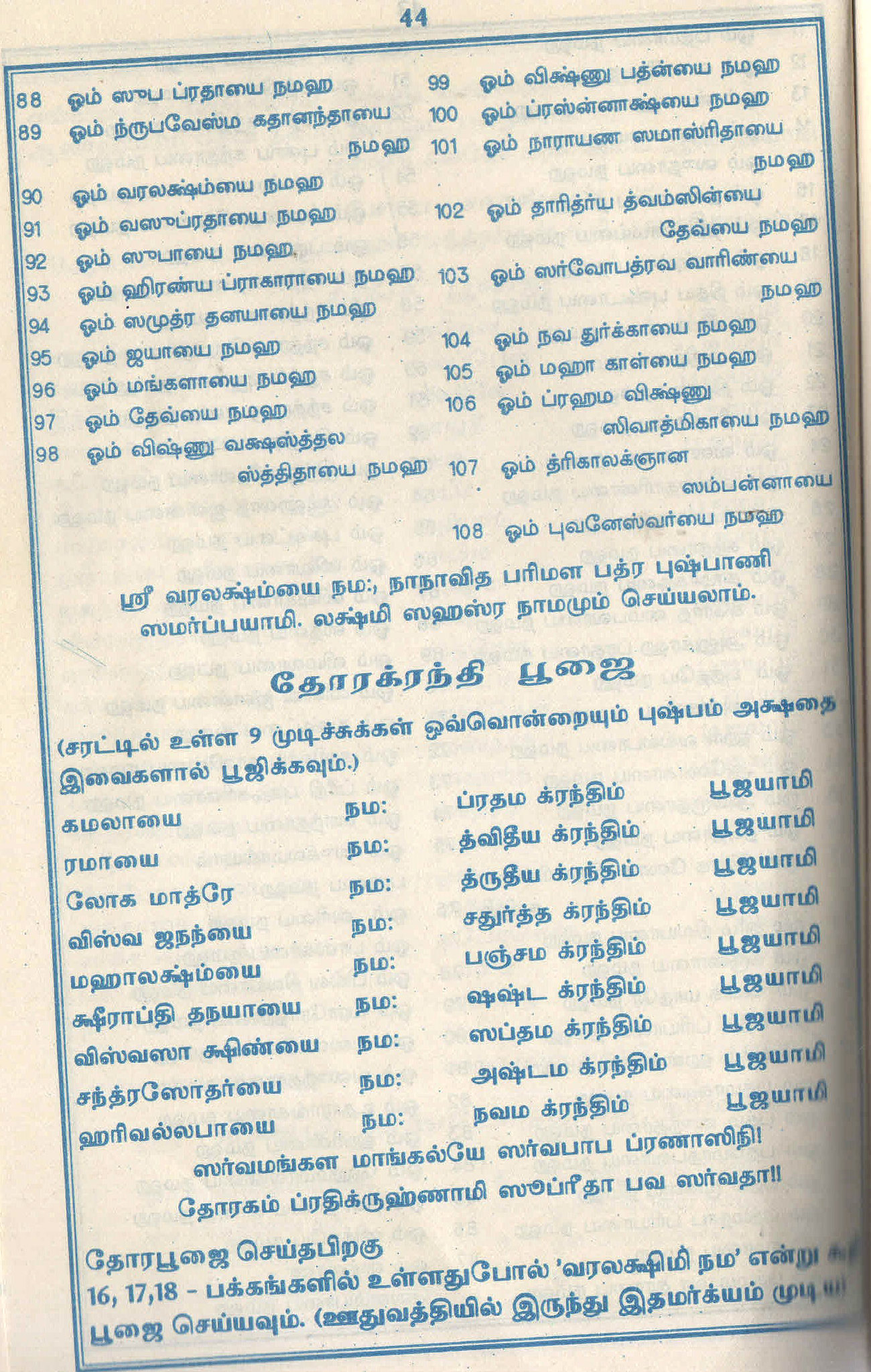 |
| Varalakshmi vratham slokhas |
Proceed with thoram Pooja/Nonbu Saradu poojai which is known as Thorakrandhi pooja.
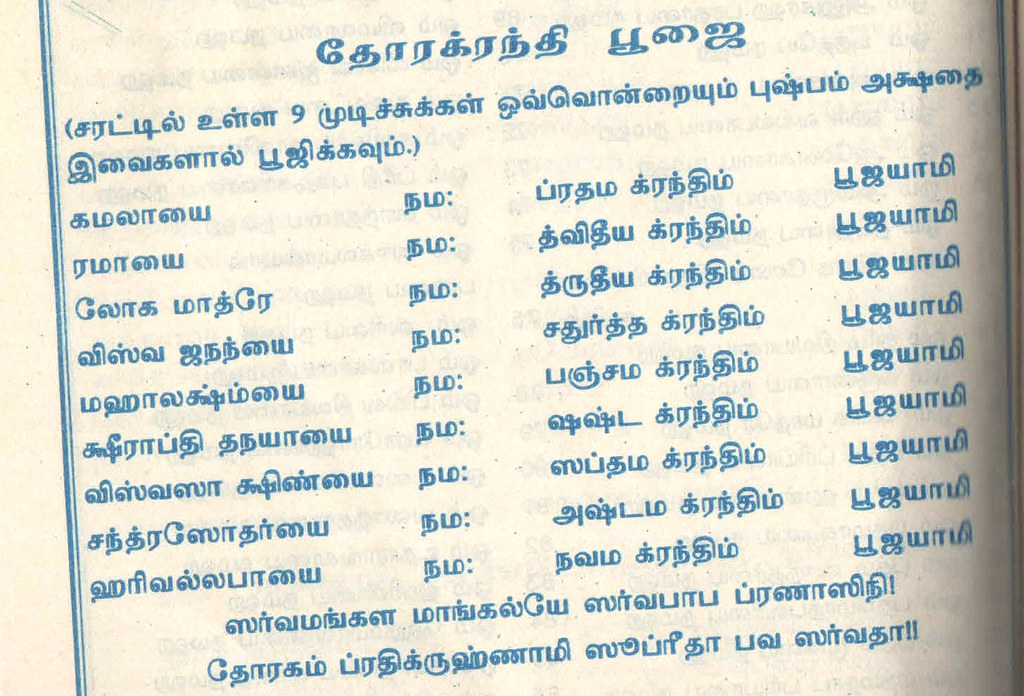 |
| Thorakrandhi pooja / Nonbu pooja |
Neivedyam and Mangala Aarathi
Finally, Mangala Harathi is performed for the kalasha. Different types of sweets/neivedyam are offered in front of the God. Nonbu saradu/Thoram (yellow thread) should be tied on the woman's right hand and Pongu nool should be tied around your neck. You can ask your Husband to do this. At the end, take harathi by mixing turmeric & kumkum in water. Sing the Harathi song while taking mangala aarathi.
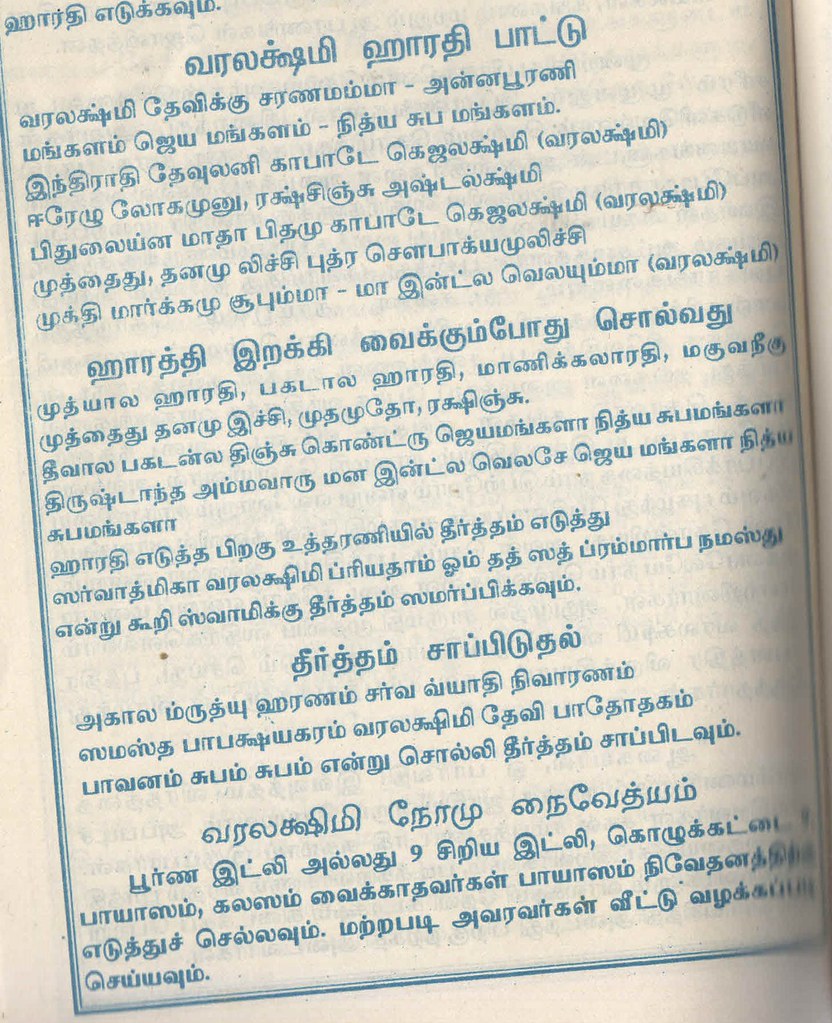 |
| Mangala harathi song |
If you have not read the Varalakshmi Vratham story on Thursday, do it now.
Offer the Thamboolam – Coconut, betel leaf and nuts, turmeric sticks, kumkum, coconut along with flowers, blouse piece, mirror and comb is offered to women in the locality and in the evening an Harathi is offered to Lakshmi with some neivedyam.
Punar Puja - How To Remove Kalasha
Some people remove the kalasha on Friday night. But my friends told me to do it on Saturday. On Saturday morning, after taking bath, perform a pooja for the kalasha. Then dismantle it at auspicious time of the day. Consume little water as theertha. Sprinkle it all around in the house. Then pour the remaining water in well, trees or tulsi plant. If rice is used in Kalasha, mix it with rice in the house. If you used coins, keep in the locker safe. You can remove the nonbu saradu/Pongu nool and thoram after 3 days or on Saturday. Make some sweets with the coconut you kept in kalasam and enjoy with your family. Do not make any spicy dishes with the coconut.
If you want to strictly follow all the rules and methods of Varalakshmi Puja, then it would be wise to take the advice from an elderly woman who is regularly performing the puja. What I have shared here is purely based on the procedure given in the book and pooja methods shared by my friend Shalini. It may vary from place to place and tradition. Thanks for visiting this page. Please write few words in the comment section if you find this post useful. I will be more happy to know it.
Last but not the least please find the links which I felt them useful for beginners.
Some useful Links for Slokhas & Videos for beginners
Refer THIS LINK for the detailed pooja procedure with slokhas in English
- This VIDEO will help you to decorate Lakshmi Idol & placing Kalasha.
- If you want to do the pooja by listening to slokhas chanted by a priest, please refer this AUDIO, AUDIO & VIDEO , THIS VIDEO for Telugu Version. You can just follow the instructions and perform pooja.
How to do simple Varalakshmi Pooja
Some people don’t have the practice of Varalakshmi Vratham but still they may like to perform this pooja in a simple way. For doing a simple pooja: Light the lamp, keep some neivedyam and do the pooja by chanting Mahalakshmi Ashtothram.
Distribute the Thamboolam and prasadam by inviting married woman to your house in the evening. There are no hard and fast rules in performing the Varalakshmi Puja and you can be flexible on the puja items. Even a simple prayer will please Goddess Lakshmi.
On this auspicious day, lets pray Goddess Vara Mahalakshmi to bless us with peace, health & wealth !!
NOTE from a reader Mrs. REVATI
She has been doing this Pooja since 27yrs. Thanks a lot for sharing this valuable information mam.
If any close relative from in-laws side dies, we should not perform full puja BUT on the festival day one must take out Amman moham/ face and keep in silver glass or panchatram with rice, tambulam, coin in it in silver or peetalai / brass plate with banana leaf below. Yellow thread should be kept in amman, neivedyam should be done with fruits, beetal leaf, supari, manjal. After that tie sharadu in your right hand.
Please go through the comments section for frequently asked queries and answers. As the number of comments have exceeded the limit, most of the latest comments are available in second page. So please click "LOAD MORE" BUTTON in MOBILE below the comments box to see the second page in your mobile. If you are using desktop or tablet, please click the " 1-200 of 219 newer newest >> " to see the second page. Experienced people, do share your pooja methods with us, it will help everyone. Thanks !
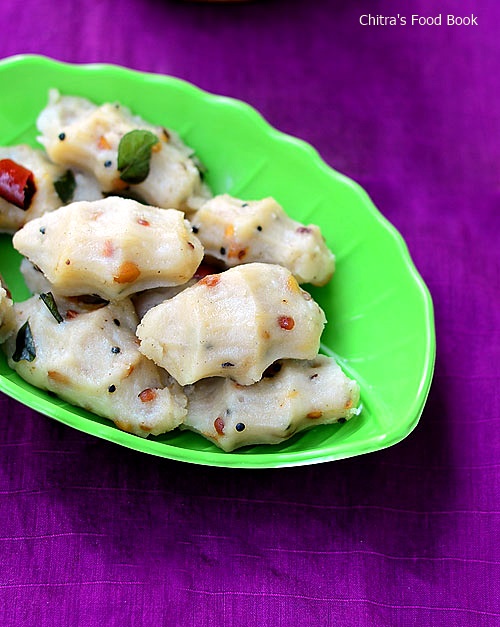
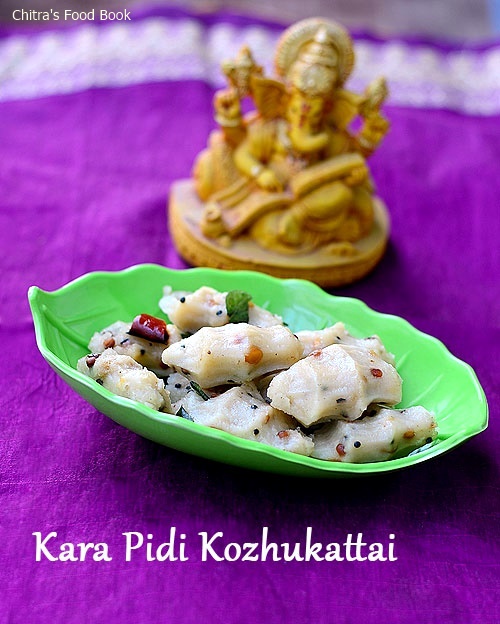
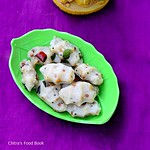 Pidi kozhukattai recipe - Kara kozhukattai / Spicy kozhukattai recipe
Pidi kozhukattai recipe - Kara kozhukattai / Spicy kozhukattai recipe

 Pidi kozhukattai recipe - Kara kozhukattai / Spicy kozhukattai recipe
Pidi kozhukattai recipe - Kara kozhukattai / Spicy kozhukattai recipe
